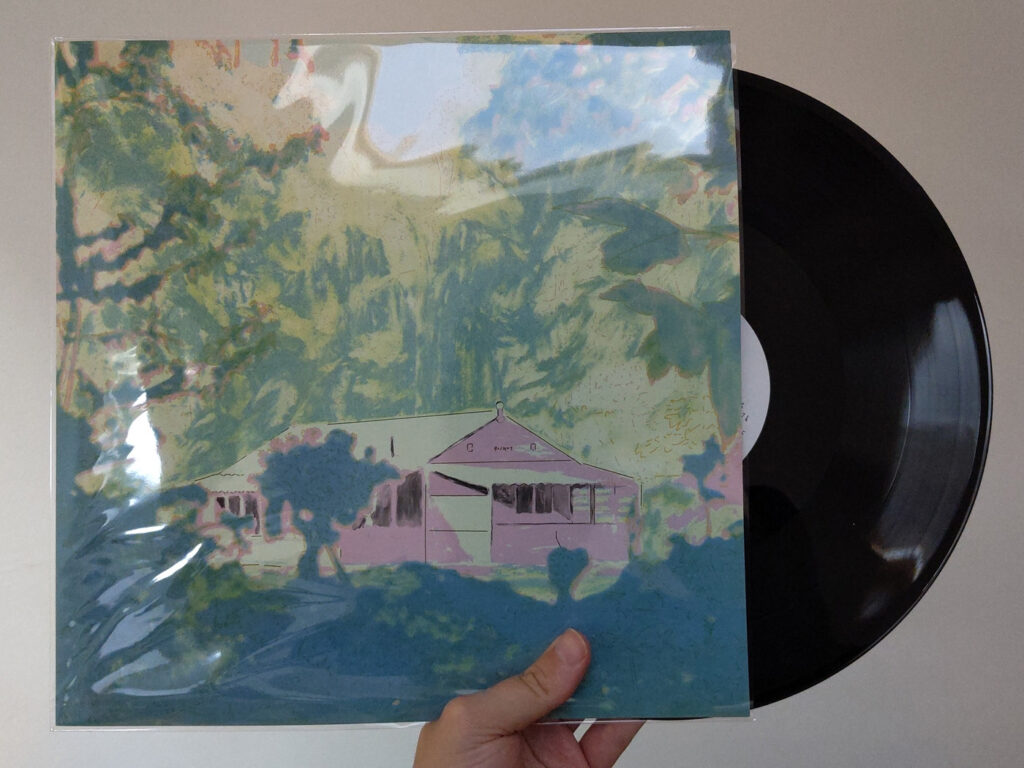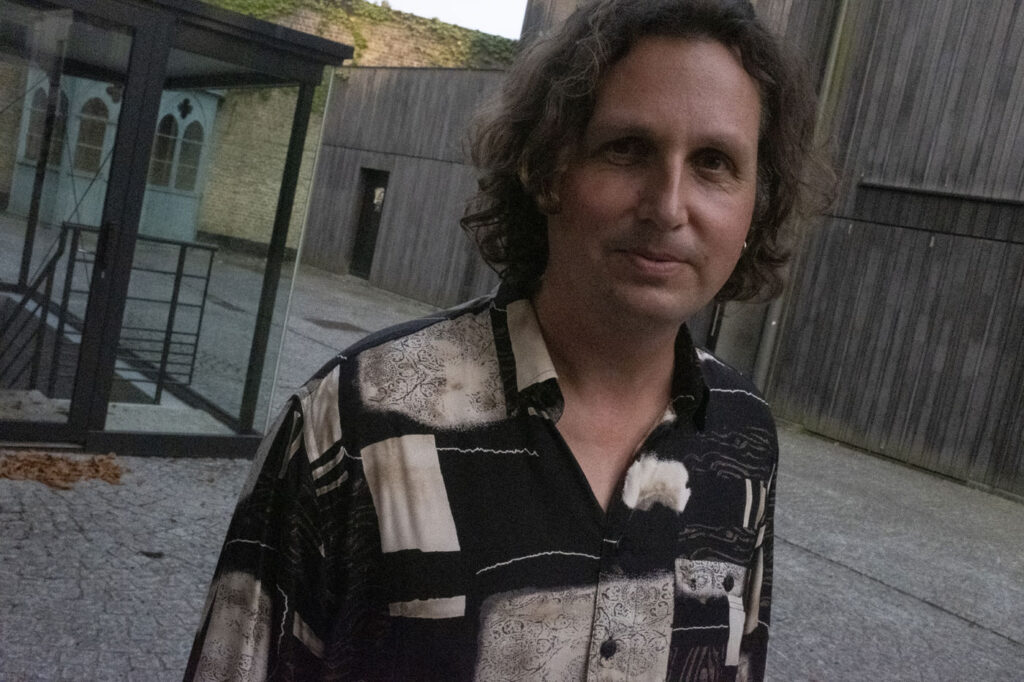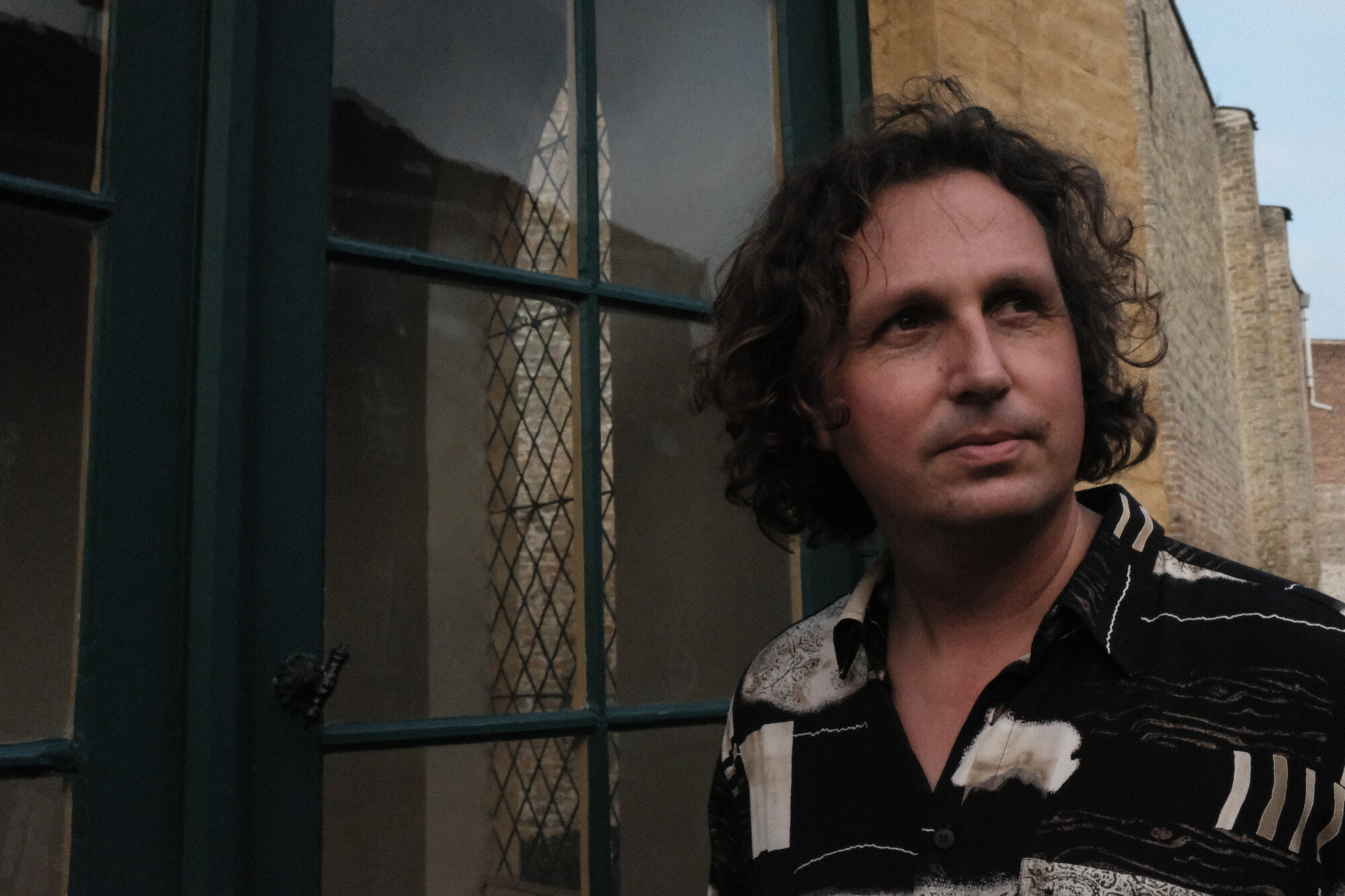Edgar Wappenhalter | Interview | New Album, ‘IJsschots Veenlaag Mist’
Edgar Wappenhalter’s ‘Ijsschots Veenlaag Mist’ drifts in like a fog over lowlands, murky and full of life.
It’s a sound caught between the hiss of homemade cassette tape and a fleeting poem from a Dutch bar poet. No pretension here – just reverb, delay, and the warmth of a worn-down mic capturing raw feeling in a hallway corner. Steve Marreyt’s got that restless soul, with poetry and chords spilling out like he’s always two steps ahead of himself. Even his gear has a story: a Zoom 8-track, a gift keyboard, and a borrowed mic, pieced together like a sonic collage. The whole thing feels like you’re listening through the static of time, pure lo-fi magic for a world that’s forgotten the thrill of imperfection.

“It’s all done in a very spontaneous way”
Your music with Edgar Wappenhalter has evolved significantly over the years. How do you feel ‘Ijsschots Veenlaag Mist’ represents your journey as an artist up to this point?
Steve Marreyt: Has it? I’m not so sure. My approach has always been kind of the same. I think this album is very close to ‘On the Beach,’ for example, which came out fourteen years ago. In between these two albums, I did experiment with sampling and rough collage quite a bit for the Guido Gezelle tape, ‘Het spuit de oorgaten uit,’ and the B-side of my previous LP. But apart from the recording process changing from analog to digital, I feel it still relies on the same lo-fi concepts: it’s all done in a very spontaneous way, with loose song structures that are often partly improvised, a love for reverb and delay, and hints at passionate love affairs with poetry or short-lived interests in certain genres. This was the case with dungeon synth for this LP, which I tried to “Wappenhalterize.”
You’ve mentioned that ‘Ijsschots Veenlaag Mist’ is a tribute to Dutch poet Sonja Prins. How did her poetry influence the thematic elements of the album, and how did you adapt her work into your music?
Some Dutch Marxist poets started reviving her poetry some time ago, so I began reading her poems and Lidy Nicolasen’s biography about her. Both her life and work blew me away. Although I write poetry myself, I don’t always find it easy to come up with song lyrics, so I often try to put other people’s poems to music (cf., the 7″ on Lexi, the Denise Levertov poem on ‘On the Beach,’ etc.). Working on the music for this album and getting soaked up in Sonja Prins kind of happened simultaneously, so at one point, they started merging, which eventually led to ‘Ijsschots Veenlaag Mist.’ I really like the idea that through this album, I contribute to the rediscovery of this wonderful body of work, in my own little way.
This album features a mix of traditional folk sounds with electronic elements. Can you delve into the specific techniques and equipment you used to achieve this balance?
I’m not a gear freak at all. I work with cheap stuff because I can’t afford fancy instruments or state-of-the-art recording gear. To be able to record this album, I bought a Zoom digital 8-track, a Behringer mic, and a Foxgear Echosex Baby because my old Tascam 4-track died, and I lost my precious Boss digital delay while playing in a short-lived band in Ghent a few years ago. Another important moment was my wife buying me a keyboard for my 40th birthday, which was the best present ever. The technique is basically setting up that gear in a corner of our hallway and starting to jam.
The recording of ‘Ijsschots Veenlaag Mist’ involved a lot of experimentation. Could you share some memorable moments or challenges you faced during the recording process?
Well, the only big challenge was getting the right sound and mix out of that Zoom 8-track. I come from an “only analog is real” aesthetic, so I had to adjust to the lo-fi-not-so-lo-fi approach of the 21st century for a while. With respect to experimentation, one memorable moment was when I re-recorded the vocal parts for ‘Vogel Rok Diamant.’ The first version featured lyrics by Clouseau, a Flemish pop band that has been immensely popular here since the ’80s. Their album ‘Hoezo?’ is pure nostalgia for me, reminding me of family parties and local playback shows pretending I was as cool as the young lead singer Koen Wauters. I wasn’t entirely satisfied with the result because Clouseau is pretty heavily connoted in Flanders. Anyway, after setting a poem by Prins to music, I randomly picked some lines from a volume lying around and combined it with a quote from my wife’s late grandmother, who said, “Het is toch al niet gemakkelijk hé, Sonja, met al dat volk in jen uus,” and just recorded a new vocal layer. It all started to come together from that point onward.
‘Hallusineren/Altijd weer zand’ features guest vocals by Annelies Monseré. How did you collaborate on this track, and what specific qualities did her voice bring to the song?
I sent Annelies the track asking if she could add a vocal layer to the chorus. She has a very particular timbre and style, one that is unique in current folk music. I just wanted to add some of the Annelies Monseré magic to that song. It worked out really well. Everyone should check out her last couple of albums—they’re all outstanding works of art.
Olivier Schrauwen’s artwork accompanies the album. How did his visual style complement the music, and what was your collaborative process like with him?
It’s very similar to asking Annelies to record a vocal layer. It also has to do with the same impulse to ask people whose work I admire to lift my record to levels I can’t achieve by myself. Olivier Schrauwen is a genius in my world. I’m always extremely excited when new work of his is published. He’s a master storyteller, very funny, and I love his style. So I just sent him a kind message asking if he was interested in doing the artwork—not expecting him to say yes, to be honest. I’m extremely grateful to have a record released with his artwork.
How does ‘Ijsschots Veenlaag Mist’ differ from or build upon the sound and themes of your earlier albums?
The album’s titles and lyrics are in Dutch, marking a departure from your previous work.
How did this choice affect the songwriting process and the overall sound of the album?
It didn’t, really. I have always recorded both in English and in Dutch.
How do you approach writing lyrics versus composing instrumental pieces?
I always record songs with some vague idea in mind and decide whether they will be “songs,” which means they’ll need lyrics, or more abstract instrumentals.
In terms of the album’s production, were there any particular influences or references that guided your decisions during this project?
Not really. I did try to make it more sparse at some point, influenced by Warm Currency, a band I really love. But it didn’t work out. It seems like it always has to come out as Edgar Wappenhalter, one way or another.

What’s next for you?
My book of poetry is getting published next year. I’m playing around with some new ideas for my next book right now. Music-wise, I hope we’ll get to recording a new Distels album sooner or later. I’m also playing in Luster these days, who will start recording in the near future, I guess. We’re in the mixing process of a new local band called Strövels, so a cassette should come out sometime next year, too. Then there’s also ‘s Lands Welvaren, my project with Glen Steenkiste and Simon Van Honacker, which is also slowly meandering its way to a release, I guess.
Thanks for this! I enjoyed answering your questions!
Klemen Breznikar
Headline photo: Hanne Cool
Edgar Wappenhalter Bandcamp
Morc Official Website / Facebook / Instagram / Twitter / Bandcamp




